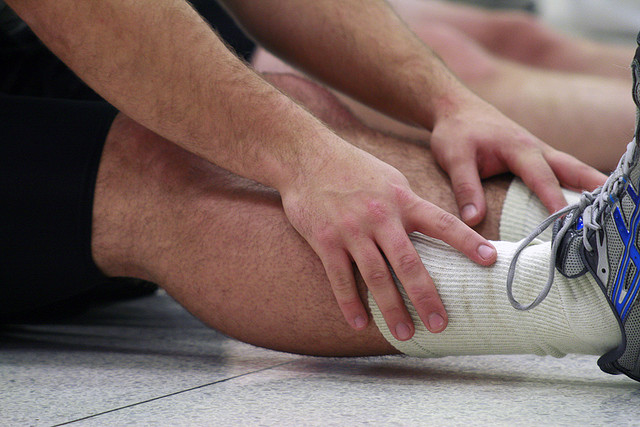
There are many injuries runners can face; some of them minor, others very serious. One of the most common injuries runners face is called Iliotibial Band Syndrome (ITBS), which affects the knee. ITBS is the inflammation of the iliotibial band, which is a fibrous tissue that runs down the outside of the leg. It begins at the hip and extends to the outer side of the shin bone, right below the knee joint. The iliotibial band helps stabilize and move the joint in the knee. When it doesn’t work properly, the movement of the knee can become painful.
What Are the Main Causes Iliotibial Band Syndrome?
ITBS can be caused by many activities or physical deformities. ITBS can be caused by exercises such as:
- Not warming up/cooling down properly after strenuous exercise;
- Running on a banked surface, which causes stress on the iliotibial band;
- Running on an incline, such as a hill or treadmill;
- Running up and down stairs;
- Hiking over a long distance;
- Rowing;
- Swimming techniques such as the breaststroke and treading water;
- Extended running;
- Excessive foot-striking force while walking or running;
- Wearing worn out shoes.
Physical deformities can cause ITBS, such as:
- Uneven leg length;
- Bowlegs;
- High or low feet arches.
All of these can cause the iliotibial band to rub up against the leg bone, causing inflammation. Having a wider pelvis can cause the knees to rotate inwards leading to ITBS being more prevalent in women than men. Others who are prone to developing ITBS are people who suddenly increase their exercise regimen or activity, including runners, sports players, swimmers and people who do outdoor activities, such as hiking.
What Are the Symptoms of Iliotibial Band Syndrome?
When the iliotibial band is irritated, moving the knee joint will become painful. With continuous movement, the pain will worsen until the joint is properly rested.
Other common symptoms that can occur are:
- Swelling at the location of the pain;
- Pain over the affected knee;
- A popping or snapping sensation when the knee is bent;
- Hip pain due to the iliotibial band snapping back and forth over the hip;
- Pain that disappears when the iliotibial band is stretched and becomes more flexible.
What is the Treatment for Iliotibial Band Syndrome?
Rest is the best medicine for ITBS, along with reducing activity, massage, stretching and strengthening the affected limb. The reasoning for this is to reduce the friction of the iliotibial band as it slides over the leg bone. If the condition improves, swimming, pool running, cycling and rowing are good exercises to do to keep in shape. If immediate rest and treatment isn’t taken, ITBS can become a chronic (ongoing) condition.
For serious cases, seeking out a health practitioner like a physical therapist or chiropractor may be required and a treatment of anti-inflammatory medicines may be required along with icing the limb. As the inflammation decreases, side exercises should be taken up to stretch the iliotibial band. After the pain disappears from stretching, strengthening exercises should be started to strengthen the muscles of the leg.
After some time, the health practitioner may have the patient start off slow, such as a gradual increase in running distance at an easy pace. People should see an improvement over the period of three to six weeks if they properly follow the stretching and exercising program. In extreme cases, surgery may be considered.
How to Prevent Iliotibial Band Syndrome
Here are some good tips to prevent ITBS:
- Use a Foam Roller to release iliotibial band tightness at home;
- Replace old or worn out shoes regularly;
- Slowly increase your running intensity and mileage to allow your body to adjust;
- Avoid running or exercising on uneven surfaces
- Keep the knee joint covered and warm (cold temperatures can put added stress on the iliotibial band);
- Always cool down and stretch after exercising. If there is any tenderness or pain, ice packs can be added to reduce the inflammation and pain;
- Warm up with stretches before starting an exercise regimen;
- Gradually increase running up and down hills to allow the body to adjust;
- If any pain is present in the legs, especially the knee, take a few days off to rest to allow it to recover;
- If the pain is persistent, see a doctor.
If you want help making sure your exercise regimen is safe and won’t place at unnecessary risk for injury, consider working with a personal trainer.

